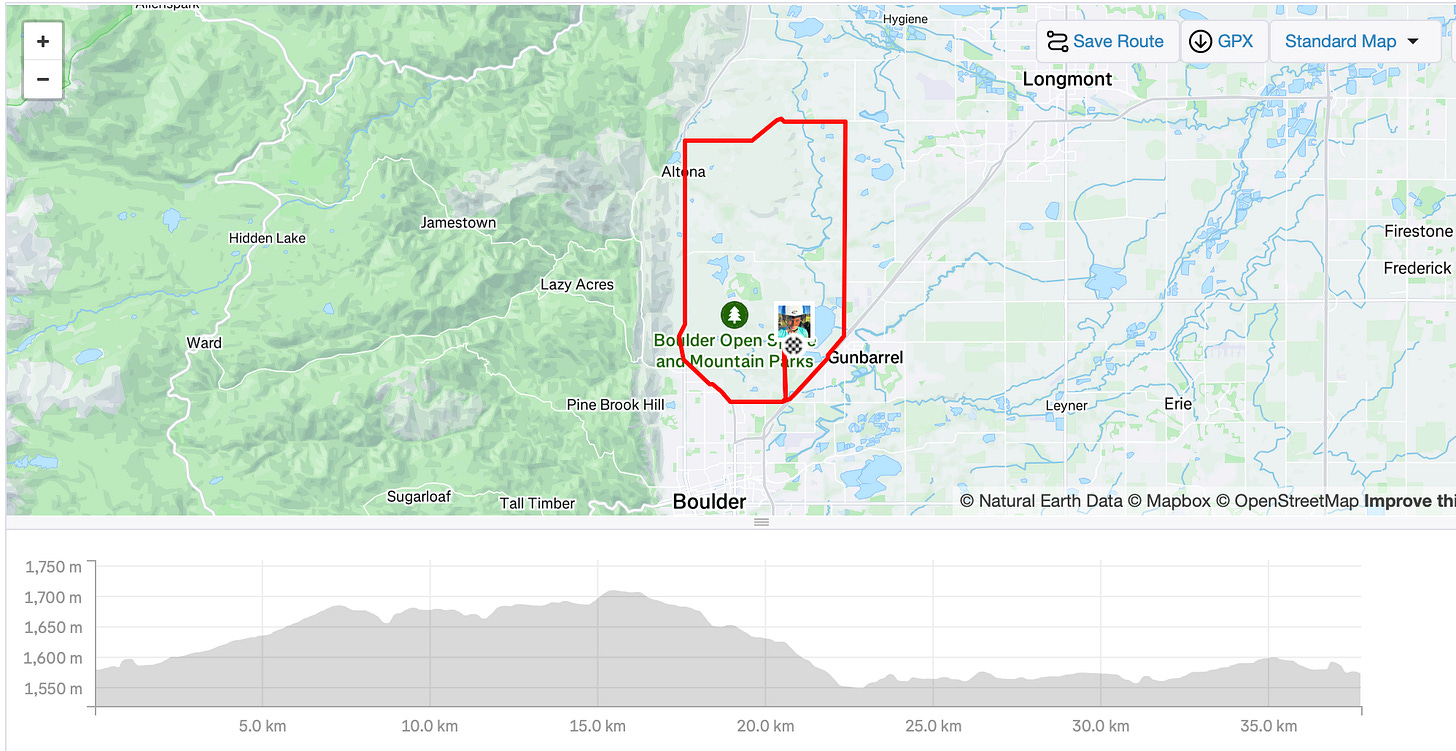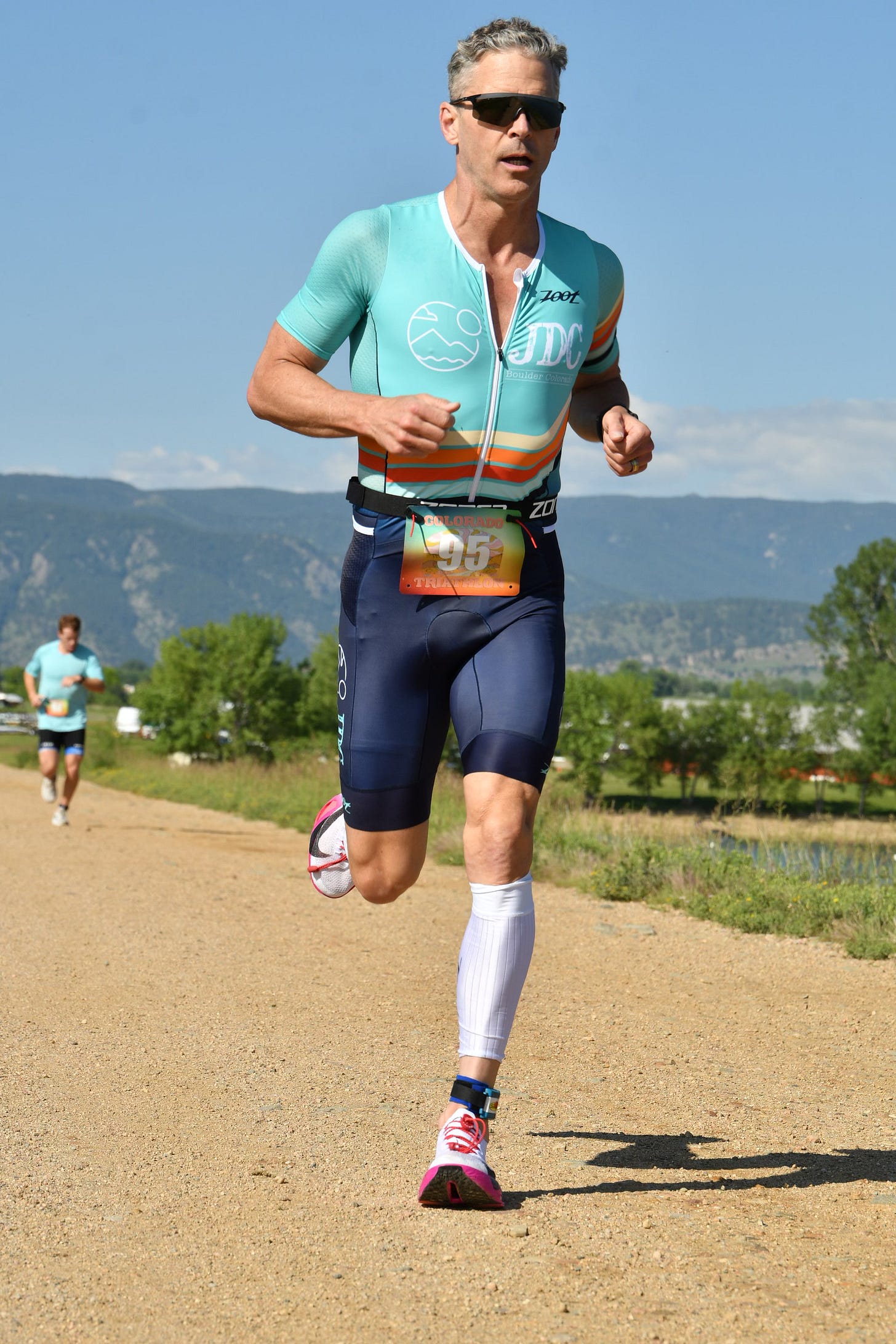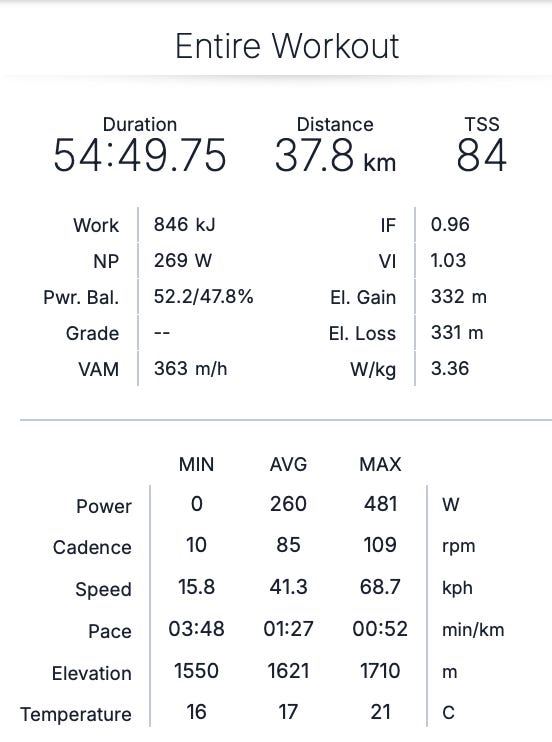We’re going to start a new series on tips, tactics and strategies to get more performance out of your fitness.
Treat It Like A Workout
In my article on Cycling Specific Workouts, I gave you a case study for long distance triathlon.
To balance long duration training sessions, use Sprint and Olympic distance races.
It is an easy way to roll up a useful dose of Zone 4 cycling.
It gives a break from always riding long on the weekend.
If you have the ability to race in a controlled manner then race recovery will be quick.
Sprint Distance Triathlons
Sprint distance instructions are simple:
Ride as strongly as possible.
No spikes over best three-minute power.1
Effort will feel uncomfortable, keep pushing strongly all the way to the end.
Olympic Distance Triathlons
For low-priority Olympic distance racing, treat the bike like a workout. Structure the workout based on the course profile. Below, is an example from the Colorado Triathlon.

To apply this protocol, you need to decide on:
Interval Structure: duration, power and effort targets.
Hydration Points: how much, where and when.
In the race that follows, at 56 years old, I was 4th overall and won my age group by ten minutes.
Let’s show you how it’s done.
TT Case Study
Because of the air being thinner, racing at moderate altitudes is fast for a given power output.
My race strategy was to split the bike leg into three segments.
1// To the top of the course: 272w for 22:15 @ 37.3 kph
2// Drink a large bottle of sports drink (350 kcal): 212w for 8:38 @ 51.5 kph
3// Back to work over the rollers to T2: 272w for 19:45 @ 42.5 kph
Turning the TT into a workout, it looks like:
Settle out of T1
2x20 Minutes Zone 4 (95% of FTP) with 10' Minutes Recovery at LT1 (75% of FTP)
Settle into T2
Mentally, a 2x20’ session is a piece of cake. It’s 10% higher power than my Tempo and the duration is a fraction of what I’ve proven in training.
To avoid over-riding, use the interval function on your bike computer to track each segment. Hold yourself back for the first few minutes of each interval.

Post Race Analysis
Races provide high quality data and an Olympic distance race can help you set targets for a 70.3 distance race.
For your 70.3 distance race, take the average power (260w, in the table above) and ride all segments under that number.2
Hardly anyone is going to be able to apply what I just explained.
They are going to start their all their races like it is a Sprint distance triathlon.
Then they will fade.
Then they will run under their potential.
The damage done is exponential to the duration of the event.

I’ll leave you with a favorite tip:
Training is about sitting on effort and producing power over time.
Effort - Power - Time
Racing is about producing goal velocity with the least power.
Efficient Production of Velocity
When I am training, I notice speed but don’t care about it. My goal is time at intensity.
On race day, I am paying close attention to speed, wind resistance and effort. If my bike speed is good enough then I want to conserve energy. I know my incremental energy is best saved for the run, where there is a linear relationship between effort and speed.
Back to Table of Contents
Use your gears.
Sprint distance athletes, if you have not run well off the bike then no spikes over best-six minute power.
The three-minute test is outlined in my VO2 Max Workouts article.
Repeat this technique for Ironman distance. To set power ceilings for Ironman, use straight average power from a 70.3 distance race.
Everyone, for every distance, keep lowering bike targets, caps and ceilings until you run well.







